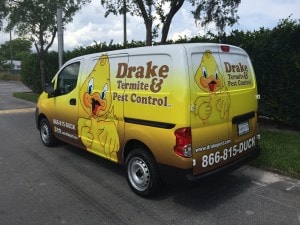As a homeowner, you’ve worked incredibly hard to create a house that you love and can share with the people in your life. From selecting the perfect color of paint to decorating your patio or planting flowers, each action you take and penny you invest into your house is a step towards building a true home that people feel welcomed into upon first sight.
A big component of how people will perceive a home, though, is the maintenance and grooming of the lawn. And unbeknownst to many Florida homeowners, there are certain insects that have massive ability to wreak havoc on a prized lawn. Those bugs are called Chinch Bugs. In order to best protect your lawn from these gnarly creatures, here are some key points to keep in mind.
Florida Heat
Chinch Bugs are creatures that thrive in extreme heat. You may have heard areas in Florida refer to the summer months as “Chinch Bug season,” and that’s because the months of May-September are when these critters can do their maximum damage. For those reasons, it’s important to seek out Chinch Bug control in Orlando or surrounding areas where humidity and dense heat are prevalent. And while Chinch Bugs thrive in the summer, they are only completely inactive during the cooler months in places that get substantially cold. As the climate in Florida generally remains temperate year-round, it’s important to be on the lookout for these bugs all the time.
Irreversible Damage
If left unattended, it is possible for Chinch Bugs to cause so much damage to a lawn that there is little to no chance of the lawn coming back to life.
These tiny creatures invade often already drought-stressed lawns that are vulnerable and suck the life out of the remaining healthy grass, injecting it with toxic saliva that causes the blades to die. This makes way for weeds and unsightly grass varieties to sprout up and disrupt the health and aesthetic design of your lawn.
If your lawn looks like it is suffering from lack of water, begins to brown or grow frail, contact a local exterminator to come check your lawn for Chinch Bugs before it’s too late.
Common Warning Signs
In addition to browning grass, there are other more specific signs you can observe to determine if your lawn is truly suffering from a Chinch Bug infestation.
While at first glance the damage may resemble that of heat or water stressed grass, there are some stark differences in a Chinch Bug ridden lawn. First, the damage seen on sections of grass is often incomplete or scattered randomly throughout a lawn. This is because the insects prey on the weakest grass first before attacking the healthier areas. Additionally, yellow blades along the outside of the damaged areas is a key sign as Chinch Bugs begin their work in one spot and move outward.
Ultimately, awareness and proactivity are the first and most important steps to preventing or stopping Chinch Bugs from ruining your lawn. When you notice the signs, don’t waste any time in contacting your local exterminator, Drake Lawn & Pest Control, for the best Chinch Bug treatment Orlando has to offer. Call for a free estimate today and reclaim your lawn for the long haul.
Brandon is the President of Drake Lawn and Pest Control in Orlando, FL . He has over 30 years experience in the Orlando Pest Control Industry. He attributes his achievements to living by these rules: continuous training and education, providing honest work and striving for the pursuit of perfect service.


